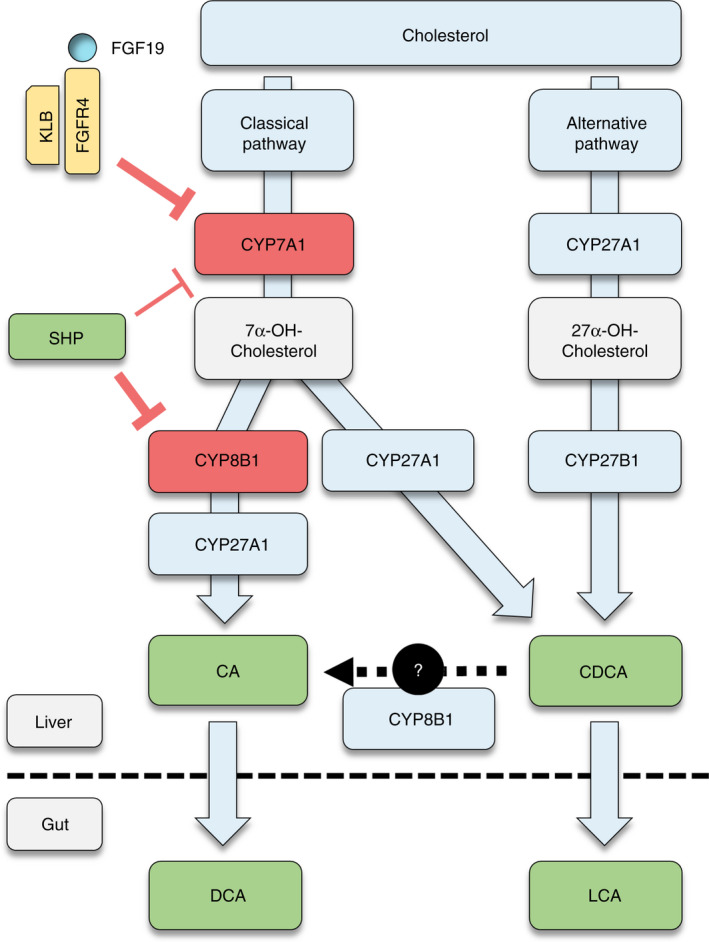FIGURE 1.

Regulatory pathways of bile acid synthesis. Primary bile acids (BA) are synthesised from cholesterol in hepatocytes, following either the “classical” or the “alternative” pathway. In the classical pathway, cholesterol is first modified by CYP7A1 and subsequently by CYP8B1 to produce cholic acid (CA) or, alternatively by CYP27A1 to produce chenodeoxycholic acid (CDCA). In the alternative pathway, CYP27A1 initiates cholesterol modification, followed by CYP7B1‐dependent biotransformation, resulting in formation of CDCA. Expression of CYP7A1 is the rate‐limiting enzymatic step for BA synthesis, while CYP8B1 defines the BA pool as it is critical for production of CA. Metabolisation of BAs by gut bacteria leads to the formation of the secondary BAs deoxycholic acid (DCA) and lithocholic acid (LCA). BA synthesis is mainly regulated by two mechanisms: First, intrahepatic farnesoid X receptor (FXR) activation induces the expression of small heterodimer partner (SHP), which suppresses the expression of CYP8B1 and (to a lesser extent) CYP7A1. Second, activation of FXR in the intestines induces the release of fibroblast growth factor‐19 (FGF19) into the portal venous system. FGF19 binds to the FGF receptor 4 (FGFR4) and its co‐receptor beta‐Klotho (KLB) on hepatocytes, thereby strongly suppressing CYP7A1 expression. Abbreviations: BA, bile acid; CA, cholic acid; CDCA, chenodeoxycholic acid; DCA, deoxycholic acid; FGF19, fibroblast growth factor‐19; FGFR4, fibroblast growth factor receptor 4; FXR, farnesoid X receptor; KLB, beta‐Klotho; LCA, lithocholic acid; SHP, small heterodimer partner
